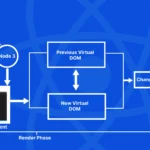Demystifying Provider Enrollment Process
Provider enrollment is the process designed for healthcare providers to become a part of the network created by health insurance companies. When healthcare providers become a part of the network, they can be reimbursed for the services they offer to patients.
By enrolling in the network, organizations can get paid by different insurance companies for the services provided by their practitioners. However, if the healthcare practitioner isn’t enrolled in the network, the insurance company will not reimburse the healthcare facility for the provider’s work.
The enrollment process is usually arranged by a credentialing specialist. This expert works for such departments as the Credentials Verification Organization (CVO), medical staff office, or executive administration. Some healthcare organizations take advantage of delegated credentialing while others prefer to do it in-house.
If medical practitioner wants to get reimbursed for their services, whether commercial or government, they need to enroll in the network confirmed by the paying party. That’s why all organizations that have practitioners on their staff need to arrange the enrollment process.
Healthcare providers, who need to undergo enrollment usually include:
- Nurse practitioners
- Physician assistants
- Physicians
- Mental healthcare providers
- Behavioral healthcare providers
- Diagnostic providers
- Custodial providers
- Therapeutic providers
Organizations that have to take care of provider enrollment include hospitals, medical centers, practices, and medical groups.
Overall, provider enrollment is an important process that allows healthcare organizations to receive reimbursements for their practitioners’ work. That’s why it’s imperative to arrange the enrollment process seamlessly, accurately, and timely. Otherwise, you could face reimbursement delays that may affect your organization’s financial well-being.
Provider Enrollment Process
The provider enrollment process consists of several steps that you can either complete on your own or delegate to the company that handles credentialing. Since credentialing can take as long as 9 to 12 months, it’s important not to do anything to slow it down. That’s why it may be a good idea to outsource it to professional service providers.
Identifying relevant insurance companies
To enroll a practitioner in a network, the enrollment experts have to conduct research and figure out which insurance companies are willing to accept new providers. Not all companies cover all areas, so the choice of the payer may depend on location. While doing the research, the enrollment specialist learns about the requirements and the deadlines for the enrollment process.
The right network isn’t always the biggest. It’s the one that your target patients use in your area. The focus should be on servicing as many patients as possible.
Filing an application
To apply, the practitioner has to provide all the required documentation demanded by the payer. This may include credentialing documents, application fees, fingerprints, and other required paperwork.
The organization and its practitioner should be ready to offer extensive documentation because different networks may have different requirements.
In some cases, you may improve your chances of acceptance by writing a letter of interest. This usually happens with networks that have a limit on how many providers they are willing to accept for a specific provider type. If this happens, you can draft a letter of interest that lists the benefits of accepting a particular provider and explains what makes them stand out from the crowd.
Common errors that practitioners make when filing an application:
- Omitting answers to some of the questions
- Not providing a detailed answer to application questions
- Not providing the requested set of documents
- Failing to provide primary documents
Pro tip: If the network denies an application, it’s possible to ask for an appeal. By submitting additional information and documents, you could achieve acceptance.
Negotiating with the Insurance Company
If the insurance company decides to accept the practitioner, they will provide a credentialing contract. By signing the contract, the healthcare provider becomes a part of the network.
This contract usually consists of many terms that describe the partnership. If the healthcare provider or the organization doesn’t agree with the terms, it’s possible to negotiate these terms before signing the contract.
The most common reason for negotiations is the reimbursement rate. You may be able to provide additional documents and arguments in order to increase it.
Benefits of Provider Enrollment
Besides the reimbursement you receive for the services provided by your practitioners, the benefits of provider enrollment include:
- More patient referrals
- Fast-track payments from payers
- Fewer chances of revenue loss through denials
- Relationships with numerous payers
Provider enrollment is an essential part of healthcare services. If you want to receive money for the work your practitioners are doing, you have to make sure that they are part of the network. Whether you outsource the enrollment and credentialing process to a third party or handle it in-house, you need to focus on providing extensive documents and filing applications on time.
Since credentialing is a time-consuming process, the faster you can start working on it, the faster your practitioners can begin providing services in your facility.


















